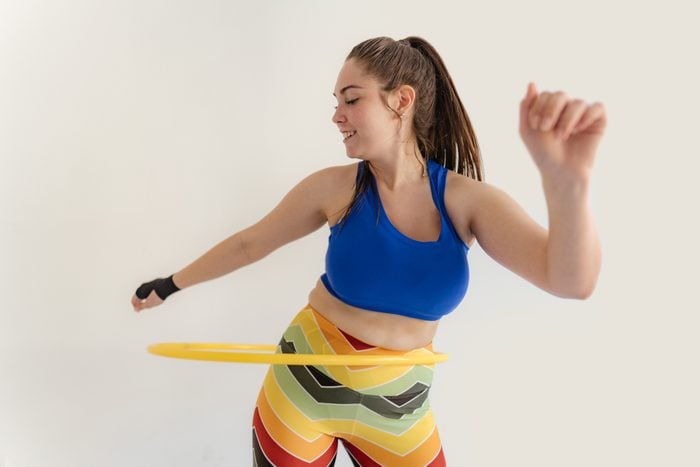
Exercise is the single best thing you can do to reduce stress and boost your mood—yet even though most of us know this, it can still be hard to make it a priority. Sound familiar? You’re definitely not alone—in fact, even a heart doctor who specializes in stress reduction says he struggled with it!
“Growing up, I was athletic but paid zero attention to other aspects of my health,” says Joseph A. Craft III, MD, a cardiologist and stress researcher at the Heart Health Center in St. Louis, MO. “Then during medical school and residency, I stopped playing sports and just ate whatever was there. My stress went way up and my health went down. I kept telling myself that once I had time, I’d exercise more regularly, reduce my stress, sleep better, etc. Yet somehow it never became magically more convenient—go figure!”
8 Common Workout Mistakes You Might Be Making
Finally, when he felt more stressed out than ever, Dr. Craft says he had a personal breakthrough while he was counseling a patient who claimed that he had no time to exercise, despite having severe heart disease brought on by stress and unhealthy living.
“It was time to take my own advice,” this heart doctor laughs. “I decided to do the exact same program I recommend to my patients, along with them, focusing on exercise, stress management, nutrition and emotional support.”
Dr. Craft says he was shocked to see an almost immediate improvement. “My stress plummeted, I had more energy, and I just felt happier,” he says.
Here’s How Much Exercise You Need to Counteract Sitting All Day, Says Study
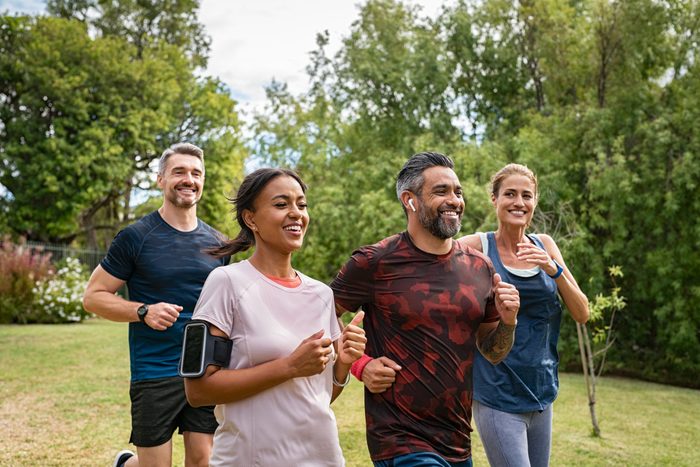
How does exercise reduce stress?
Ultimately, Dr. Craft says, any type of movement will be beneficial—but there are some exercises that work better for this than others. Here’s what he says you should look for in a stress-busting, mood-boosting workout:
- It’s an activity you genuinely enjoy. Forcing yourself to do something you hate can actually increase stress.
- There’s some cardiovascular work. It doesn’t have to be straight cardio, but elevating your heart rate gets your endorphins—the “feel good” chemicals—to flood your brain.
- It’s meditative. “Moving meditations” allow you to exercise, while still processing thoughts and feelings.
- It’s collaborative. Strong relationships with others is another powerful way to reduce stress and lift your spirits so workouts that allow you to hang out with other people give you the best of both worlds.
- It’s routine. Being able to schedule and anticipate the exercise, gets you in a regular habit and your brain will begin to anticipate the workout and you’ll feel better just thinking about doing it.
The Happiness Diet: 7 Best Mood-Boosting Foods, from Nutrition and Brain Experts
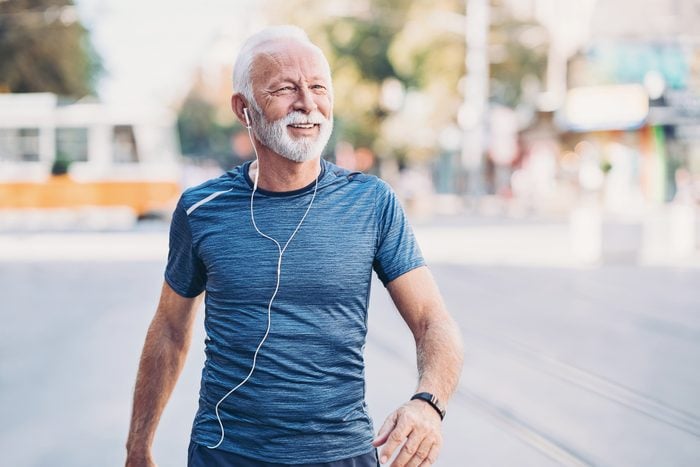
9 best exercises to reduce stress and lift your spirits
We asked Dr. Craft and celebrity trainer Harley Pasternak, M.SC., to share their top picks.
A 15-minute walk outdoors
“Believe it or not, I tell my clients walking might be a more beneficial workout than running,” says Pasternak. He explains that doing too intense of cardio can increase your stress, while walking, on the other hand, is more submaximal in intensity”—meaning it doesn’t force you to push yourself to maximum capacity.
“Plus,” he adds, “you don’t need to change into different clothing or carve a specific time out of the day to do it. You can weave it throughout the day.”
Lace up a pair of podiatrist-recommended walking shoes and hit the pavement, or stay cozy indoors on one of the best small treadmills.
One Major Effect Walking Has on Your Dementia Risk, Says Research
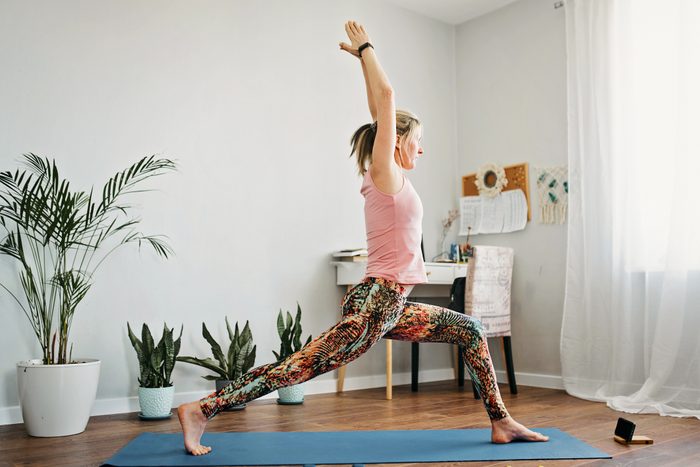
Yoga
This exercise combines stretching, deep breathing, and flowing movements—all of which can have a gentle-yet-powerful impact on stress and mood. “This is the definition of a moving meditation,” says Dr. Craft, who adds that he practices yoga regularly as part of his own stress-reduction plan.
The 5 Best Yoga Poses for a Healthier Gut, from a Registered Yoga Teacher
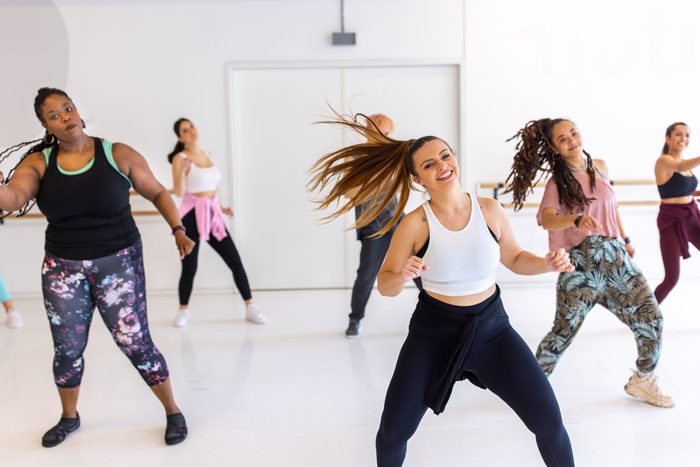
Dancing in a group
There’s a reason so many cultures throughout history have had their own form of traditional dance: moving at the same rhythm and in the same ways with others around you has a unique effect on the brain. Dancing together releases mood-boosting endorphins but also oxytocin, the “bonding” hormone, which reduces stress by helping you feel closer to others. Group dancing may also help prevent dementia, and is one way to help deal with anxiety.
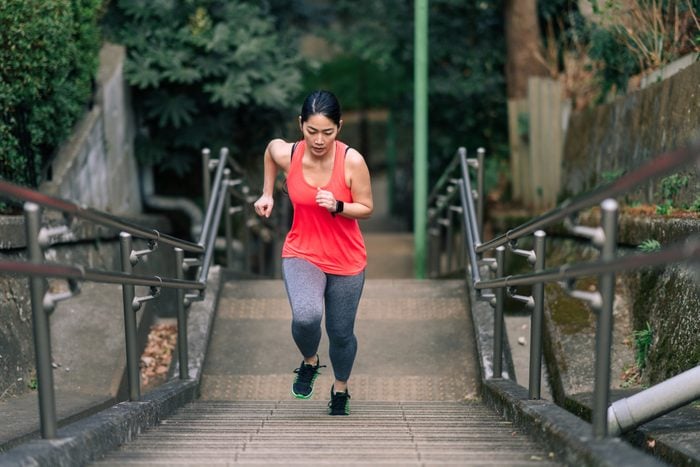
Taking the stairs
Do not underestimate the power of mini workouts throughout your day, especially when it comes to reducing stress, says Pasternak. Incidental exercises—like taking the stairs instead of the elevator or parking far away from the entrance, add up—giving you small boosts of endorphins, he explains. “Exercise shouldn’t be about spending countless hours on the elliptical. Instead try and incorporate movement and activity into everything you do.”
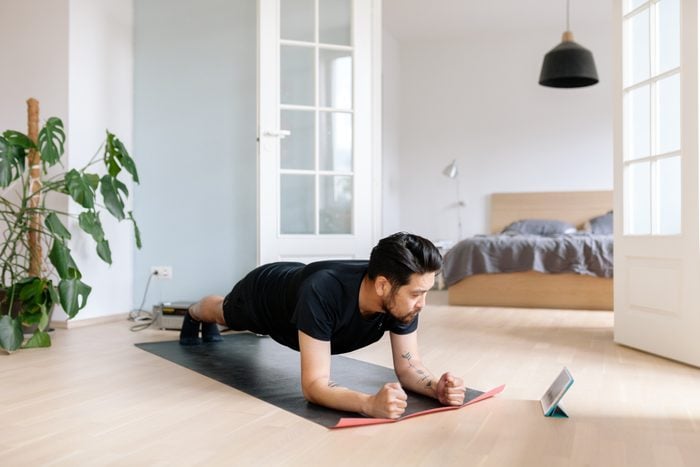
Core exercises
Planks, crunches, and other core exercises are simple movements you can do almost anywhere and with no equipment. These types of movements reduce stress and improve mood by training you to breathe properly, have better posture, and pay more attention to how you are feeling in your body, says Dr. Craft.
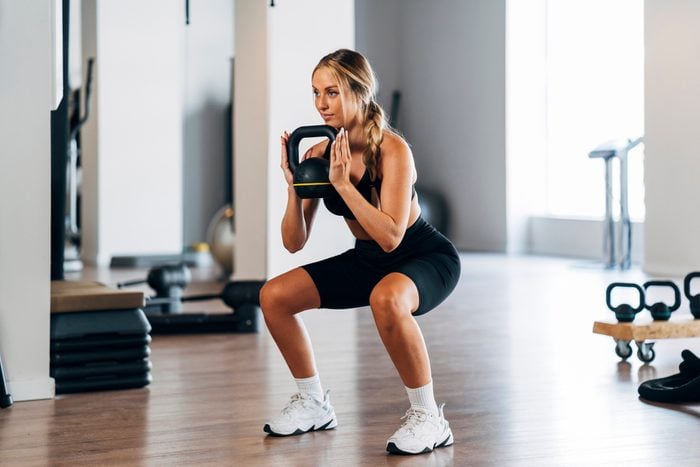
Squats
Squatting and lunging are movements that are both functional—we do them as part of our everyday lives—and practical, using your whole body together. They can get your heart rate up quickly while strengthening your muscles and there are endless squat varieties so you never get bored, says Pasternak.
The Healthy @Reader’s Digest Medical Review Board co-chair Latoya Julce adds that squats—along with push, hinge, and pull moves, like deadlifts and push-ups—are an important, equipment-free foundation for any workout program. This is because the body needs strong, balanced muscles for everyday moves, like pulling doors open, squatting to sit, and bending over to pick up a pet, baby or anything from the ground. Strength will keep the body stable during these activities, which will help prevent incidental injuries.
A Combat Expert’s 11 Self-Defense Moves Every Woman Who Exercises Outdoors Should Know
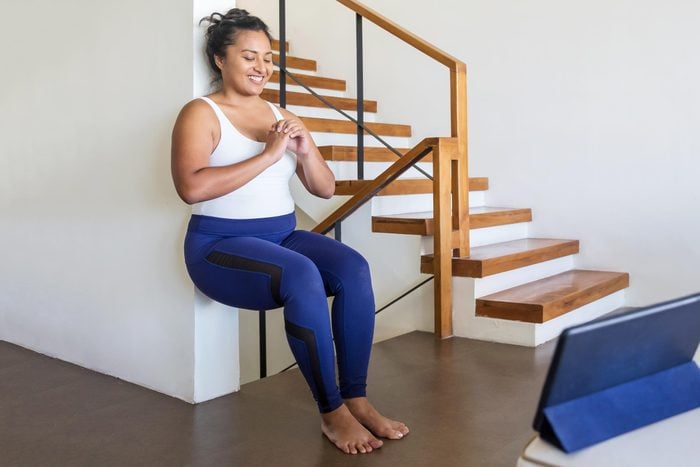
Wall sits
Static movements, like doing a one-minute wall sit, increase the blood flow to your brain, strengthen your muscles and focus your attention.
Dr. Craft says they also have the added benefit of allowing you to meditate or think through problems at the same time. Wall sits are also one of the best full-body strength moves.

Morning workouts
“I’ve learned that doing some gentle exercise first thing in the morning is a fantastic stress management strategy and a wonderfully energizing way to start each day,” says Dr. Craft.
It doesn’t matter as much what you do. Instead, the timing is everything, allowing you to take advantage of rising cortisol levels in the morning and focus your mind. “The days I exercise in the morning are just happier days overall,” he adds.
Weekend-Only Workouts Are Just as Effective as Daily Exercise, Says New Study
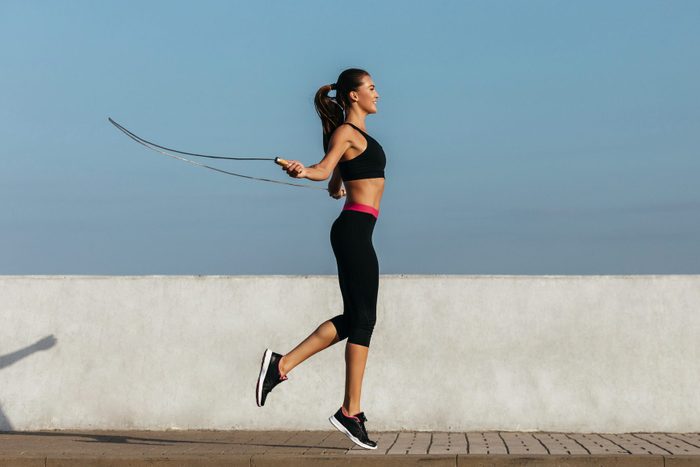
Cardio and strength intervals
Interval training is one of the hallmarks of the workouts Pasternak designs for his celeb clients, including Lady Gaga. This involves doing one minute of a cardio exercise, like burpees or jumping rope, followed by a compound strength movement, like a squat-thrust or pushup with a row. This quick burst revs up your heart rate without completely exhausting you.
For more health challenges and your daily dose of wellness, get The Healthy @Reader’s Digest newsletter. Follow The Healthy on Facebook, Instagram, and Twitter. Keep reading:

